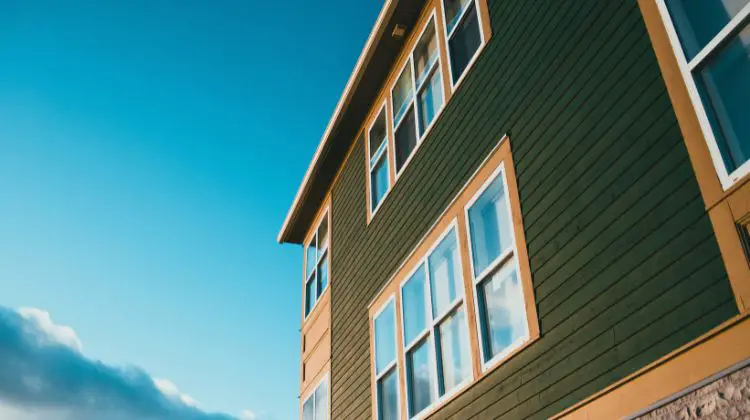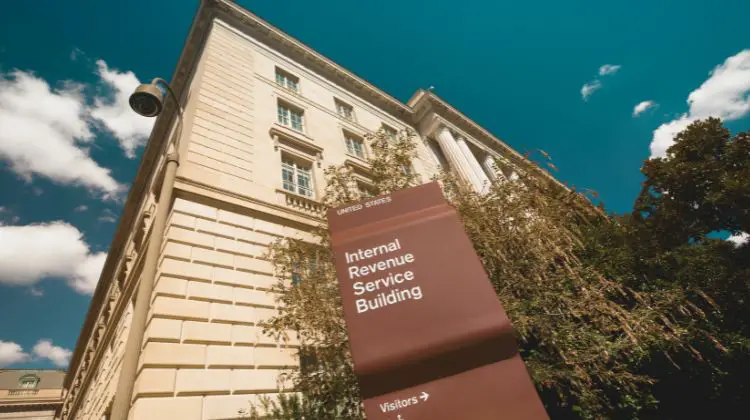Looking for Section 8 housing program alternatives? You’re not alone. With long waitlists and limited availability, many people find themselves searching for other options. The good news is there are several alternatives that can help you secure affordable housing. This guide explores some of these options and how they might work for you, providing choices beyond the traditional housing voucher program.
Table of Contents:
- Understanding Section 8 Housing Program Alternatives
- Public Housing: A Direct Alternative to Section 8
- Low-Income Housing Tax Credit (LIHTC) Properties
- Rural Development Housing Programs
- Non-Profit and Faith-Based Housing Programs
- State and Local Housing Programs
- Privately Owned Subsidized Housing
- Cooperative Housing
- Supportive Housing Programs
- Comparison of Housing Alternatives
- Accessing Information and Program Support
- Conclusion
Understanding Section 8 Housing Program Alternatives
Section 8, officially known as the Housing Choice Voucher Program, is a significant federal housing assistance program. However, the demand for this choice voucher program often exceeds the available housing choice vouchers. This leads many individuals and low-income families to look for other housing programs.
Fortunately, various housing programs function as alternatives to the standard housing voucher system. These alternatives range from other government-sponsored initiatives like public housing to efforts by non-profit organizations and rural development projects. Each assistance program has specific eligibility criteria, application processes, and benefits, so understanding these differences is important for finding suitable affordable housing.
Exploring these assistance programs can open up new avenues for securing stable and affordable living situations. Some programs might offer project-based rental assistance, while others provide different forms of support. Knowledge of the full spectrum of available housing assistance can significantly improve your chances of finding a home.
Public Housing: A Direct Alternative to Section 8
Public housing is a prominent alternative when the Section 8 housing choice voucher program waiting list is too long or closed. Administered by local Public Housing Agencies (PHAs) under the Department of Housing and Urban Development (HUD), this program provides decent and safe rental housing for eligible low-income families, the elderly, and persons with disabilities. This housing program is a long-standing form of rental assistance.
Unlike the Section 8 housing voucher, which allows tenants to choose housing in the private market, public housing units are typically owned and managed directly by the local housing authority. While waitlists for public housing can also be substantial, they are sometimes shorter or move more quickly than those for the housing choice voucher. Investigating local PHA websites can offer more information and sometimes even a resource library for applicants.
Residents in public housing generally pay rent equal to 30% of their adjusted gross income. Utilities may be included in the rent or subsidized, and the housing authority handles property maintenance and repairs. Understanding the specific rules and lease agreements set by the local PHA is crucial for applicants and tenants, and some PHAs may offer online trainings or access to policy guidance.
Key Features of Public Housing:
- Rent is typically calculated as 30% of your adjusted household income.
- Utility allowances or inclusions are common, helping to manage costs.
- Property upkeep and repairs are managed by the housing authority.
- Units are located in PHA-owned properties, ranging from scattered single family homes to high-rise apartments.
Low-Income Housing Tax Credit (LIHTC) Properties
The Low-Income Housing Tax Credit (LIHTC) program offers another significant path to affordable housing, acting as a valuable Section 8 housing program alternative. This federal program incentivizes private developers to build, acquire, or rehabilitate affordable rental housing by providing tax credits. The LIHTC program has been instrumental in creating millions of affordable housing units across the nation, for both urban development and suburban areas.
Properties developed or preserved using LIHTCs offer units at reduced rents to qualified tenants. Eligibility is typically based on earning 60% or less of the Area Median Income (AMI), though some units may target those with even lower incomes, such as 50% or 30% of AMI. Unlike tenant-based housing choice vouchers, the subsidy in LIHTC properties is tied to the unit, meaning the rent remains affordable for qualifying households as long as they live there and meet program requirements.
Finding LIHTC properties usually involves contacting state housing finance agencies or searching specialized affordable housing locators online. Property management companies for these developments handle applications and can explain specific income limits and rent structures. Many find these properties appealing due to their quality, as they are often newer or recently renovated.
Benefits of LIHTC Housing:
- Properties are often newer or have undergone recent substantial rehabilitation.
- Rents are capped based on the Area Median Income, providing predictability.
- These housing units are available in a wide range of communities.
- Professional property management is standard.
Rural Development Housing Programs
For individuals and families residing in or willing to move to rural areas, the U.S. Department of Agriculture (USDA) offers several impactful housing assistance programs. These USDA Rural Development initiatives can be excellent Section 8 housing program alternatives, specifically for those in less densely populated regions. These programs are a cornerstone of the federal government’s commitment to improving the quality of life and housing stock in rural America.
The USDA’s Rural Development arm provides a variety of housing solutions, including direct loans, loan guarantees for single family homes, and rental assistance in designated rural housing projects. Their programs aim to make homeownership more accessible and improve rental housing options for low- and moderate-income rural residents. Understanding the policy guidance for each specific USDA housing program is important for potential applicants.
These housing programs often have specific eligibility criteria related to income, household size, and the property’s location within an eligible rural area. For instance, the Section 502 Direct Loan Program assists low- and very-low-income applicants obtain decent, safe, and sanitary housing in eligible rural areas by providing payment assistance to increase an applicant’s repayment ability. The Section 515 Rural Rental Housing program provides loans to develop affordable rental housing for very low- to moderate-income families, elderly persons, and persons with disabilities.
USDA Housing Programs Include:
- Section 515 Rural Rental Housing Loans: Helps create affordable multi-family rental housing.
- Section 502 Direct Loan Program: Offers payment assistance for purchasing single family homes.
- Section 504 Home Repair Program: Provides loans and grants to very-low-income homeowners to repair, improve, or modernize their homes.
- Rental Assistance Program: Provides project-based rental assistance to tenants in existing USDA-financed Rural Development properties.
To access these programs, individuals should contact their local USDA Rural Development office. Staff can provide details on eligibility, application procedures, and availability of assistance. Some information might also be available through online resources or guided learning opportunities provided by the USDA.
Non-Profit and Faith-Based Housing Programs
Numerous non-profit organizations and faith-based groups across the country offer various forms of affordable housing assistance. These can range from emergency shelters and transitional housing to permanent supportive housing and long-term rental assistance programs. Such organizations often work as community partners with government agencies and local funders.
Groups like Habitat for Humanity focus on homeownership by building and rehabilitating houses with the help of volunteer labor and future homeowners. Catholic Charities, Lutheran Social Services, and Jewish Family Services, among other faith-based organizations, frequently operate housing programs and offer supportive services. Local community development corporations (CDCs) also play a vital role by developing affordable housing and spearheading community project initiatives for neighborhood revitalization.
The advantage of these programs often lies in their ability to offer more than just housing; they may provide case management, job training, financial literacy education, and childcare. Eligibility requirements can sometimes be more flexible than federal programs, and they may focus on specific populations like veterans, seniors, or families experiencing homelessness. Finding these programs often involves local research, contacting social service agencies, or checking for information via community partners.
Advantages of Non-Profit Housing Programs:
- Eligibility requirements might offer more flexibility than federal options.
- Many programs provide additional support services like counseling or job assistance.
- Programs can be adjusted to address specific community needs and challenges.
- They often foster a strong sense of community among residents.
State and Local Housing Programs
Beyond federal initiatives, many state and local governments administer their own housing assistance programs. These can serve as effective Section 8 housing program alternatives, particularly when federal program waiting lists are extensive. These programs are often funded through state revenues, housing trust funds, or block grants like the Community Development Block Grant (CDBG) program or Emergency Solutions Grants for homeless assistance.
State housing finance agencies (HFAs) are key players, offering programs like state-funded rental assistance vouchers, down payment assistance for first-time homebuyers, and financing for affordable housing development. Cities and counties may also operate their own affordable housing lotteries for units in new developments, or provide emergency rental assistance to prevent homelessness. Compliance requirements for these programs vary by jurisdiction.
Information about these state and local programs can typically be found on the websites of state HFAs, city housing departments, or county human services offices. These online portals may offer learning opportunities or frequently asked questions (FAQ collections) sections. Keeping an eye on local news and community bulletin boards can also reveal new or upcoming housing initiatives, and some agencies offer email updates log options.
Examples of State and Local Programs:
- State-funded rental assistance similar to the housing choice voucher program.
- City-specific affordable housing lotteries for newly constructed units.
- County-level emergency rental assistance programs for those facing eviction.
- Homeownership assistance programs including down payment support.
Privately Owned Subsidized Housing
Some private landlords and property management companies participate in government programs that enable them to offer subsidized housing. These properties receive financial assistance, such as project-based rental assistance or mortgage subsidies, from HUD or other agencies to keep rents affordable for low- and moderate-income tenants. This differs from the tenant-based housing choice voucher, as the subsidy is attached to the unit rather than the tenant.
These privately owned subsidized housing units often have their own application processes and waiting lists, separate from the public housing or Section 8 voucher program lists. Finding these properties can involve using HUD’s online resource locator, contacting local housing authorities, or looking for advertisements specifying income restrictions. The Section 236 program, while no longer funding new projects, still has existing units with rental assistance, and there are other project-based rental assistance contracts active in many communities.
Living in such a property means your rent is typically a percentage of your income, or a fixed amount lower than market rates. The terms are defined by the specific subsidy program connected to the property. It is beneficial to inquire directly with the management of properties that indicate they offer affordable or subsidized units.
Types of Privately Owned Subsidized Housing:
- HUD-subsidized apartments (e.g., properties with Project-Based Section 8 contracts).
- Properties financed with Below Market Interest Rate (BMIR) loans that require affordable units.
- Units under the Section 236 Rental Assistance Program (for existing properties).
- Properties developed with state or local subsidies requiring affordability.
Cooperative Housing
Cooperative housing, often called “co-ops,” presents a distinct alternative to traditional renting and a potential Section 8 housing program alternative. In a housing cooperative, residents collectively own and manage the property as shareholders in a non-profit corporation that owns the building or development. Instead of paying rent, members pay a monthly carrying charge covering their share of the operating expenses, mortgage, and property taxes.
Some housing co-ops are specifically structured to be affordable, often known as limited-equity co-ops. These co-ops have income restrictions for new members and limit the resale price of shares to maintain long-term affordability. While less prevalent than other affordable housing models, co-ops can offer a stable, community-oriented living environment with greater resident control over management and policies.
Joining a co-op involves purchasing a share, the cost of which can vary widely. Financing for shares can sometimes be challenging, though some programs exist to assist. Co-ops often foster a strong sense of community as members work together on committees and decision-making processes.
Benefits of Cooperative Housing:
- Potential for lower monthly housing costs compared to market-rate rentals.
- Greater resident involvement and control over property management and rules.
- A strong sense of community and shared responsibility among members.
- Stable housing with protections similar to homeownership.
Supportive Housing Programs
Supportive housing is a crucial housing assistance option for individuals and families facing complex challenges, including homelessness, disabilities, mental health issues, or substance use disorders. This model combines affordable housing with intensive, coordinated services to help people maintain stability and improve their quality of life. Supportive housing can be an important alternative for those who need more than just rental assistance like that from a housing voucher program.
These programs often utilize various funding streams, including HUD’s Continuum of Care (CoC) program, mainstream vouchers specifically for persons with disabilities, and Medicaid. The services provided are comprehensive and can include case management, health care, mental health services, substance abuse treatment, and employment assistance. The housing itself can be scattered-site apartments or single-site residences.
Access to supportive housing typically involves an assessment process through a local Coordinated Entry system, which helps prioritize those with the greatest needs. Non-profit organizations are primary providers of supportive housing, working closely with healthcare and social service agencies. This assistance program aims to provide long-term solutions rather than temporary fixes.
Comparison of Housing Alternatives
Understanding the differences between various housing program alternatives can help you make an informed decision. The table below offers a simplified comparison of some key options. This can help you compare the voucher program with other types of rental assistance.
| Feature | Public Housing | LIHTC Properties | USDA Rural Housing | Supportive Housing |
|---|---|---|---|---|
| Primary Provider | Local Housing Authority | Private Developers (with tax credits) | USDA Rural Development / Private Owners | Non-profit organizations |
| Rent Basis | 30% of adjusted income | Capped based on Area Median Income | Varies (subsidies, loan terms, income-based) | Typically 30% of income + support services |
| Location Focus | Urban & Suburban | Urban, Suburban, some Rural | Primarily Rural Areas | Varies by community need |
| Key Characteristic | PHA-owned and managed | Privately-owned, newer/rehabbed units | Rental or single family homeownership in rural areas | Housing combined with intensive services |
Each housing program has distinct application processes and eligibility criteria. Some may require interaction with a central housing authority, while others involve applying directly to property managers or service providers.
Accessing Information and Program Support
Finding and applying for affordable housing programs can feel complex. Fortunately, resources are available to help you understand your options and complete applications. Many local housing authorities and non-profit organizations offer program support and can guide you to the right assistance program for your needs.
HUD’s website and local PHA sites often serve as a resource library, providing policy guidance, details on specific housing programs, and answers to frequently asked questions. Look for sections like “main content” or use the “search toggle” or “search search” function if available to find what you need. Some sites allow you to explore featured publications or browse regulations directly, and may even have a form title search to locate specific documents. You can also often sign up for an “email updates log” to receive notifications about program changes or waiting list openings.
For those who prefer structured learning, some organizations provide self-paced online trainings, recorded webinars, or other on-demand training materials covering fair housing rights, application processes, and financial literacy. These learning pathways and guided learning opportunities can be very beneficial. Don’t hesitate to request in-depth assistance from housing counseling agencies, which are often HUD-approved and provide free or low-cost services. These counselors can support hud’s community partners by helping individuals effectively use available programs.
Conclusion
While the Section 8 housing choice voucher program is a widely recognized form of housing assistance, numerous other Section 8 housing program alternatives exist. From public housing and LIHTC properties to specialized USDA Rural Development housing, non-profit initiatives, supportive housing, and state and local programs, options are available. Exploring these various housing programs, including different types of rental assistance and pathways to affordable single family homes, increases your chances of finding a suitable solution.
Each assistance program comes with its own application process, eligibility rules, and potential waiting list. It’s beneficial to research multiple avenues, from the traditional voucher program to newer community project efforts. Reaching out to local housing authorities, community development organizations, and housing counseling agencies can provide valuable guidance and program support, helping you make sense of policy guidance and compliance requirements.
With diligence and by utilizing the available resources, including online trainings and FAQ collections, you can identify an affordable housing program that meets your needs. The journey to secure affordable housing may require persistence, but many programs and community partners are working to support individuals and low-income families. Keep exploring your options for housing assistance and pursuing your goal of a stable, affordable home.








Reader Interactions